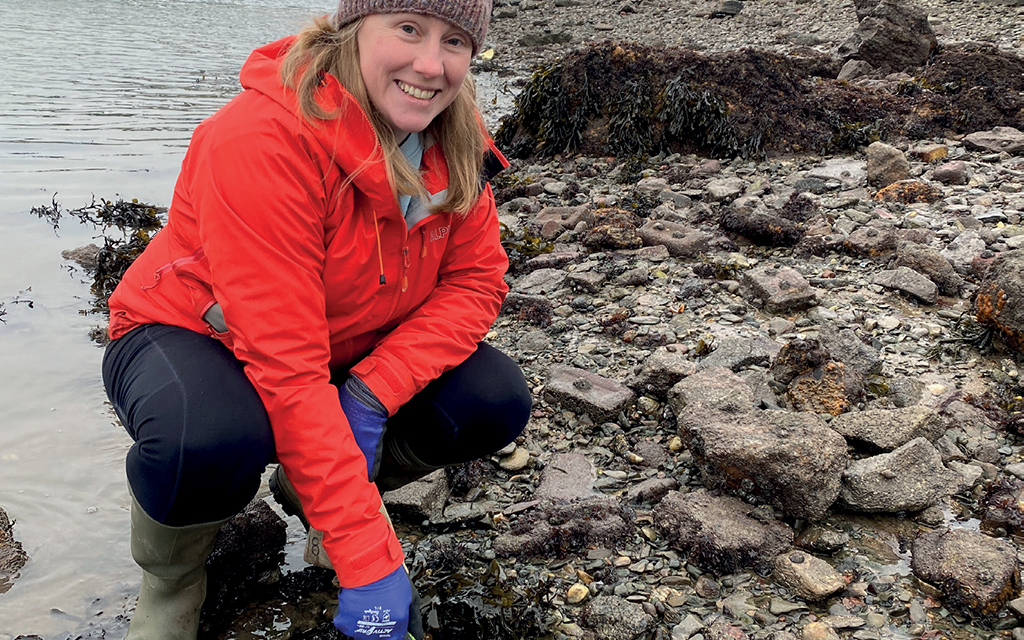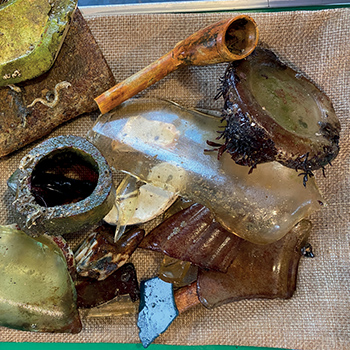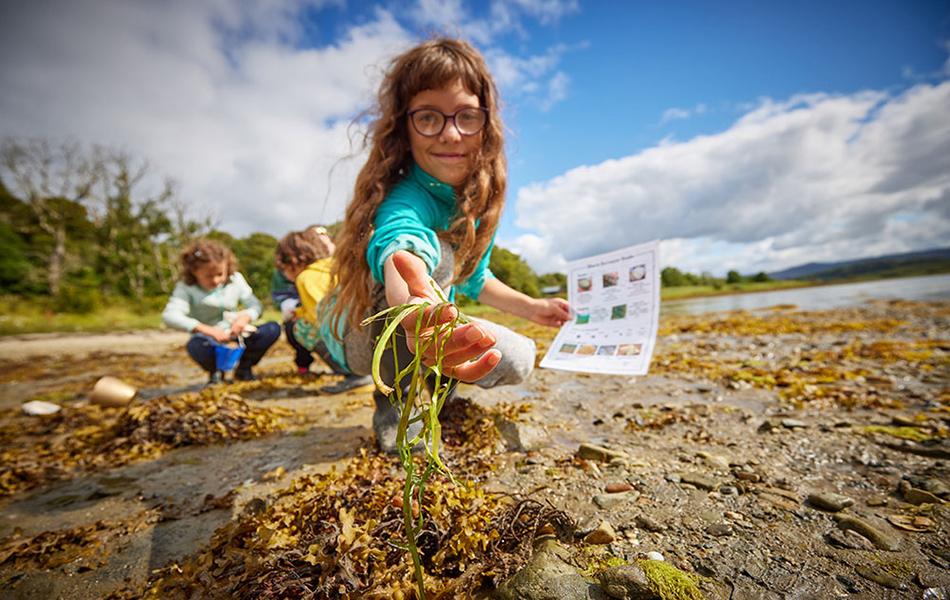
Blown out on a wet weekend in Plymouth, Kirsty Andrews signs up for a course in archaeology of the foreshore.
A wet, windy weekend. We’ve had far too many of those to count this year. One day this Spring, I looked aghast at the weather forecast, gnashed my teeth and messaged my buddy to cancel our tentative plans for the next few days. Given that our plan A was a total washout, though, did he fancy an alternative option for our Saturday’s fun - I’d seen an advert online, I said.
So it was that we booked to attend a day’s course at Mountbatten enticingly entitled ‘Introduction to Foreshore Archaeology in Plymouth Sound’, run by the SHIPS project, a community interest company whose purpose is to research and explore maritime historical sites and events. Some dry classroom stuff followed by a decidedly damp afternoon patrolling the aforementioned foreshore in search of excitement.
Did we find treasure? Why yes, we did (of sorts). From glass bottles to ceramics to metal pins from warships to old ammunition cases, it was quite a hoard
I’ve remarked before on what a broad church diving is, offering something for everyone. Marine archaeology is a branch I’d not previously explored, and I thought that this was a great opportunity to expand my horizons. To my surprise, we two were the only divers in the group of 20 or so. Our classmates were a mixed bunch; we comprised water lovers of various ilks, some already amateur archaeology sleuths, but mostly beginners. Some were interested local residents; some were families on an educational day out. It felt great to bring a broad range of skills and experience together and learn something new.
During the classroom sessions we learned just a taster of the incredible maritime history of the Plymouth area, which I already was aware was enough to fill more than a morning. Peter and Mallory, the brains behind the SHIPS project, are incredibly knowledgeable and experienced, with some great tales to tell. What actually is the foreshore and how best would we explore it? I know you know it’s the area between high-water and low-water marks, don’t worry. We were also instructed on how to process and record our finds precisely so that they could be catalogued and contribute to wider understanding. We were then let loose to see what we could find for ourselves, just right outside the Mountbatten Centre, which it so happens is a productive spot.
 Did we find treasure? Why yes, we did (of sorts). From glass bottles to ceramics to metal pins from warships to old ammunition cases, it was quite a hoard, and kept us peering with interest at the shore, even in blustery weather. Our prize of the day was an old clay pipe in fairly decent condition. These are actually pretty common, being single-use throw-away ‘vape’ equivalents; there are plenty to be found if you know where to look.
Did we find treasure? Why yes, we did (of sorts). From glass bottles to ceramics to metal pins from warships to old ammunition cases, it was quite a hoard, and kept us peering with interest at the shore, even in blustery weather. Our prize of the day was an old clay pipe in fairly decent condition. These are actually pretty common, being single-use throw-away ‘vape’ equivalents; there are plenty to be found if you know where to look.
The next time I get the opportunity to dive a site known for picking up old bits and pieces of historical interest, I shan’t turn my nose up. I’ll still be on the lookout for my favourite marine species, don’t get me wrong, but if an old piece of pottery pops up, I’ll be interested in investigating its history, perhaps with the aid of my new friends at the SHIPS project. It was a great use of a wet weekend and something I’d recommend to all my diver friends.
Article ‘Here be treasure’ by Kirsty Andrews first published in SCUBA magazine, Issue 139 October 2023.

 Author: Kirsty Andrews | Posted 06 Oct 2023
Author: Kirsty Andrews | Posted 06 Oct 2023



